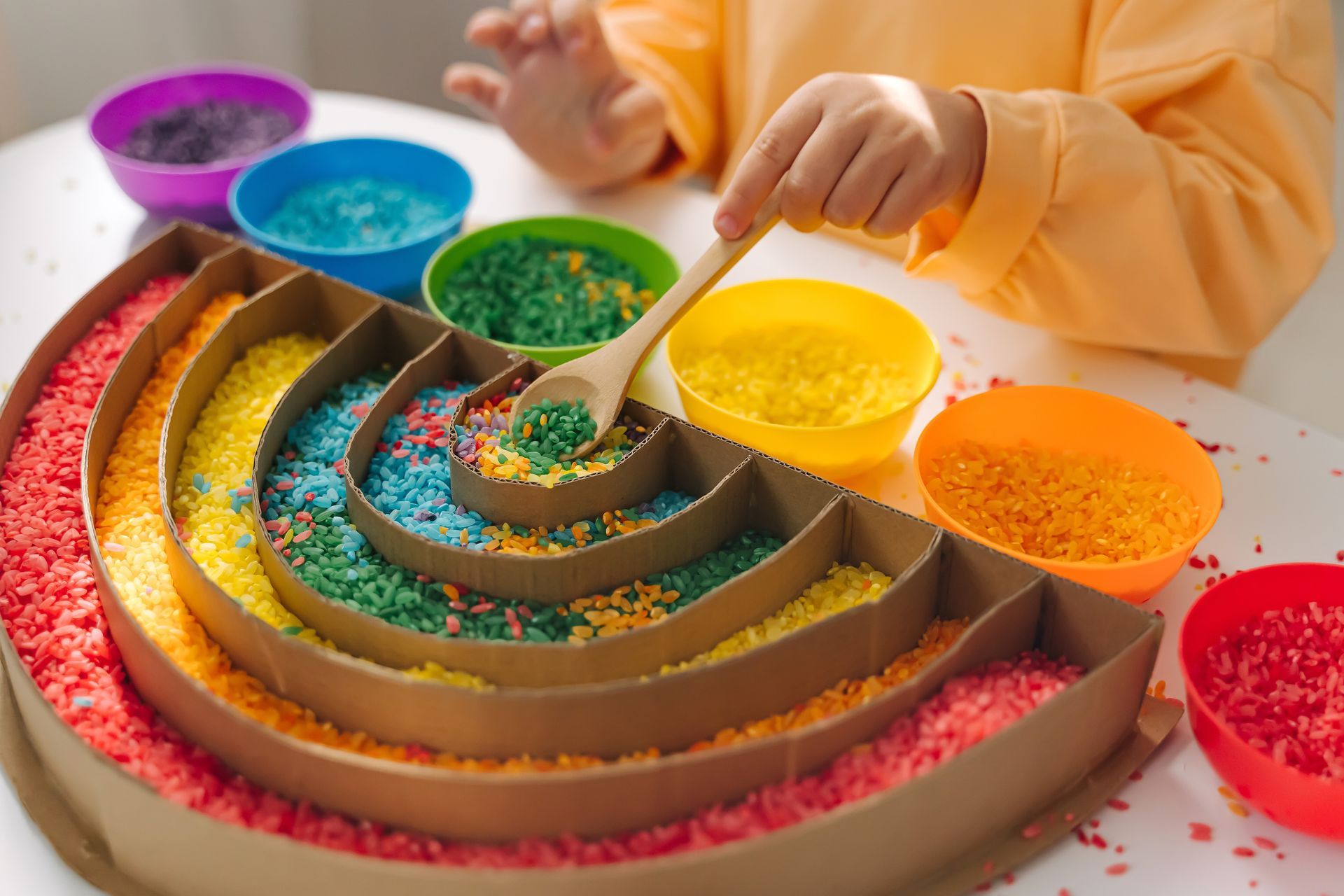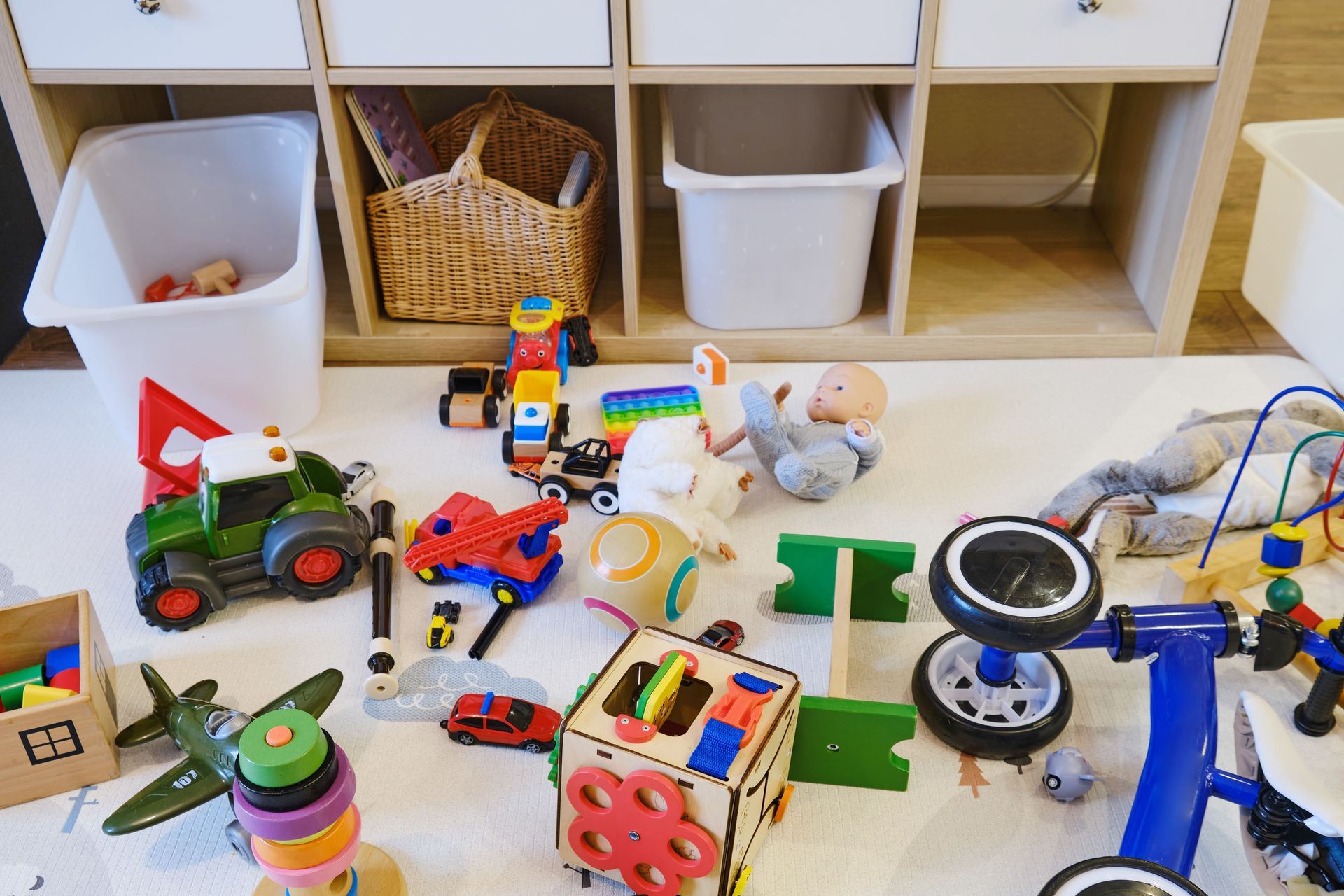What are the benefits of sensory play?
Sensory fun can be really fun, but it also provides the foundations for neural pathways in the brain to support learning. Check out this blog to find out more benefits of sensory play.

Have you ever seen an 8 month old playing in a bowl of spaghetti, with as much food on their face and high chair as what was left in their bowl? What about a 4 year old playing in a sandpit with a mix of sand and water? While we might see a big mess, children see a fun activity and they don’t even realise that they have set themselves up for a learning experience. These activities are examples of messy play, or sensory play. And they are a very important part of child development.
WHAT IS SENSORY PLAY?
Sensory play is any activity that stimulates the senses – vision, auditory, gustatory (taste), olefactory (smell) and touch, in addition to vestibular (movement) and priorioception (body awareness). The child is provided with an environment that is filled with different sensations to explore, manipulate and experiment with, in a functional and meaningful environment.
WHAT ARE THE BENEFITS OF SENSORY PLAY?
Sensory play offers amazing opportunities for a child’s brain development, to learn new skills, to foster curiosity and creativity and to make sense of the world around them. Here we dive deeper into some of the key benefits of sensory play for infants and young children.
Stimulate a child’s senses which supports their brain development.
When a child engages in sensory play, they take in sensory information through the senses. Their brain creates more neural pathways in the brain and these pathways are strengthened through additional sensory stimulation. This helps improve the way they process sensory information and leads to greater learning potential. The development and strengthening of these neural pathways can also increase a child’s attention and focus skills and sets the child up for additional learning opportunities. When the child has the opportunity to use multiple senses to accomplish a task, they will learn more from the experience and retain more information.
Supports cognitive development
By exploring different sensory items, how the different items interact with each other and how the child can cause different effects with the sensory items, it provides opportunities for developing problem solving skills and creativity.
Additionally, as the children reach 3 or 4 years old, they learn mathematical and science skills including colours, shapes, counting, matching, grouping, and understanding concepts such as more/less, heavy/light, sink/float and cause and effect.
With the freedom they experience with engaging in sensory play, children can develop their imaginations and their individual talents. Children problem solve, make decisions, take risks and become independent learners.
Increases fine motor and coordination skills
Sensory play often involves playing with small items and different tools. A child can pick up, squeeze, manipulate and alter the different objects. Manipulating small objects in this way not only helps strengthen the muscles in a child’s hands and wrists, but also helps with hand-eye coordination and bilateral coordination (coordinating both sides of the body). If sensory play incorporates the use of different tools, the children have an opportunity to learn how to manipulate the tools, further increasing their fine motor skills and supporting them with skills such as pencil grasp, using a knife and fork and doing up buttons.
Promotes communication and social development
When sensory play is provided with other children or adults, it promotes communication skills by expanding and exploring new vocabulary words that are relevant to what they are experiencing firsthand. They can describe what they are doing or experiencing (eg mixing, pouring, squishy, slimy) and how it makes them feel (eg happy, surprised).
Sensory play can also support the development of play. It may commence as parallel play for younger children, where they play side by side with minimal interaction, then move onto cooperative and imaginative play for children around 3 or 4 years of age. With support from adults, children can practice social skills such as waiting, turn-taking, sharing, and requesting and exchanging toys with others. For children who struggle with social interaction, sensory play can support them to be more ready and receptive to new experiences, including socializing and interacting, but in an environment or with an activity in which they feel more comfortable and regulated.
Build emotional development
Children experience a lot of emotions when engaging in sensory play including happiness, pride and frustration. They also start to learn the activities that make them feel good, which is the start of emotion regulation.
Simulating different sensations can have vast impacts on our mood and can be either calming or alerting. Different people have different reactions to sensory stimuli, and when people are aware of their sensory preferences, they can use this knowledge to either calm down or feel more alert. For example, some people may find listening to music relaxing (calming), and others might want to get up and dance (alerting).
Through sensory play, children have the opportunity to begin discovering what makes them feel calm. Adults may observe, or the children may learn, what sensory activities reduce overwhelm, anxiety or fear. This information can then be used in other situations to reduce these big feelings.
Sensory play is fun!
And one last thing – sensory play is fun! Play is a child’s main occupation and is a gateway for children to learn, enhance skills and develop an understanding of how the world works. When children are having fun, they are more motivated to continue with the activity and therefore motivated to try new things and learn!
WHAT AGE CAN WE FACILITATE SENSORY PLAY WITH CHILDREN?
Children start learning through their senses while they are in utero. Hearing sounds from the outside world, pushing up against the walls of the uterus and various movements of the fetus’ body commence forming the sensory system. The baby’s sensory system is immature at birth, and is set up for learning through their environment. After the baby is born, the world is a sensory feast, and everyday stimuli is helping the baby develop neural pathways to set them up for rapid brain development that occurs in infancy.
Even though everything a baby does is a sensory experience for the baby, parents can facilitate different sensory experiences through visual, auditory, tactile and movement sensations. As a child moves into infancy, we can increase opportunities for new sensory experiences using both household and inexpensive objects. However, it is important that infants are supervised with any sensory play, especially when they are putting non-food items in their mouth. When an infant is putting objects in their mouth, they are facilitating their own sensory experiences and therefore should not be discouraged, but we can provide safe options for the infant to do this at this developmental stage.
There is no age to stop sensory play. The play may change throughout the child’s childhood to match their developmental stage, however even as adults we frequently enjoy experiencing new sensations, therefore for a lot people (unless they experience sensory sensitivities), sensory play and participating in different sensory sensations is a lifelong pleasure.





